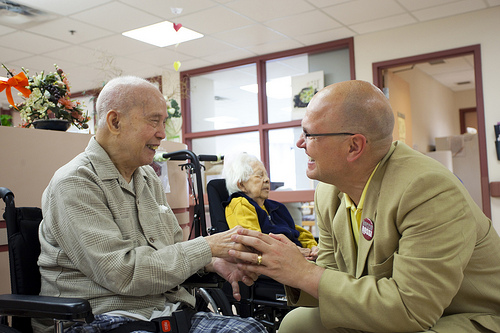Many of us take for granted our smartphones and computers and the easy, constant access it gives us to the world around us. However, most older adults don’t use this technology for a variety of reasons: they don’t know how to use them; the expense of owning and using a smartphone or computer; and no one to address problems as they arise. A New York Times article reports that in 2013 only 54% of adults over the age of 65 even have access to the internet.
Older adults use the internet to connect with family, send email, investigate medical conditions, and feel better informed when they see medical providers. They can keep current with news, join Facebook and other social media sites, write, or even start a blog. Loneliness, isolation, depression and medical conditions can threaten an elder’s quality of life and having a way to stay connected can help alleviate these conditions.
We have talked about older adults and technology in a previous post, and in my work as a an Aging Life Care Professional, I see first hand how important understanding how to use this technology can be. Most people don’t have an advocate or family member to accompany them to medical appointments, and navigating the system can be not only confusing but immensely frustrating. Allowing patients to access their medical records on line is an enormous step in giving people more control over their healthcare, but only if you know how to access and use it.Everyone is accustomed to that doctor’s visit where tests are conducted and they say “someone should call you with the test results.” It seems as though that call never comes. With the ability to access this information on line, you can often access these results before the physician’s office does.
In a Pew Research Study, older adults 65 and older who had a smart phone report that the experience was liberating. The report also found that lower adoption rates of new technologies are often related to barriers seniors face when adopting them. These include medical conditions that make it difficult for older Americans to use certain technologies or devices. Skepticism about the benefits of technology and lack of digital literacy are other deterrents cited by older adults.
How can older adults access computer literacy? It is not easy, but there ways to get started:
- Check your local senior center for classes. Some centers will provide transportation if you are in their catchment area.
- Call your local library and see if they have classes available.
- If you have a child or grandchild that lives close by, ask them for help. Yes, we know they are busy, but offer something in return that they will appreciate like an I tunes gift card.
- If you have the financial means, hire someone reputable from the community, or a student at the local college or university who is looking for some extra money.
- If an older person already has a computer and is somewhat internet literate, that doesn’t mean that they know how to access online medical records which requires a log in and password registration.
- If you have an elder who has an interest in learning about technology, take the time to teach them. It will be well worth the time. And don’t forget to be patient!




